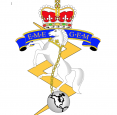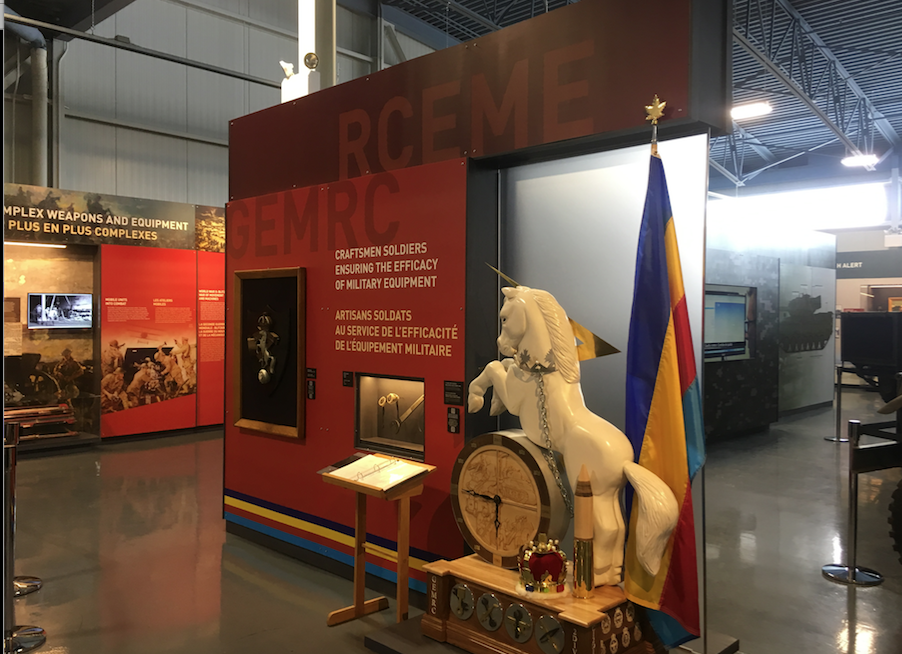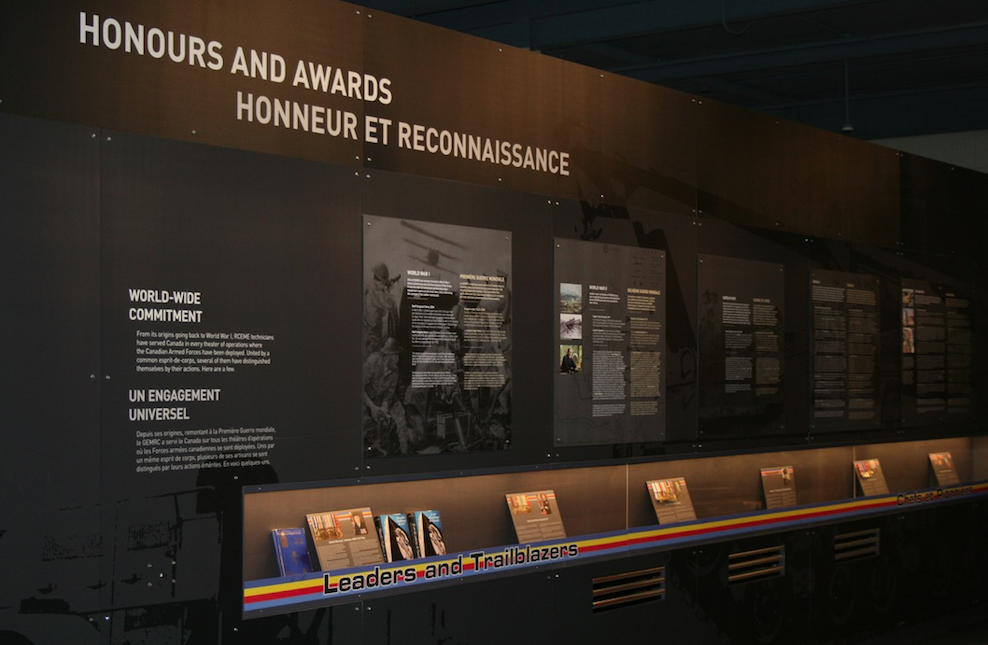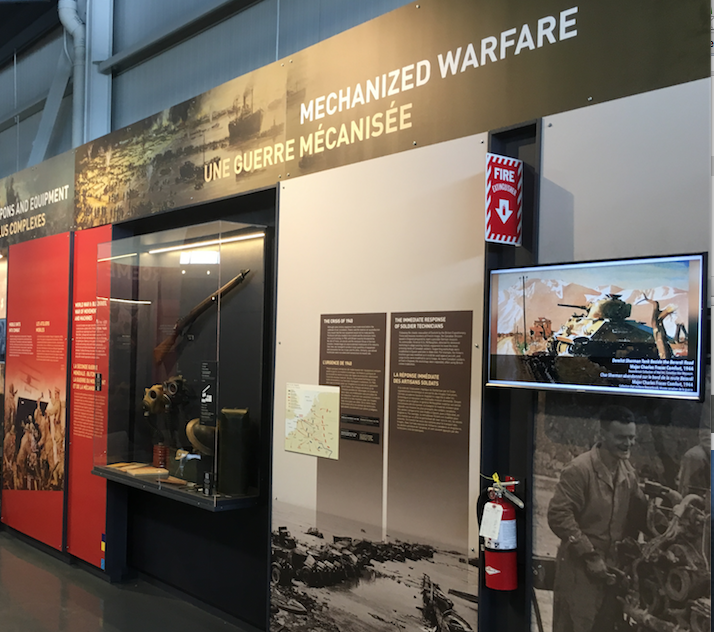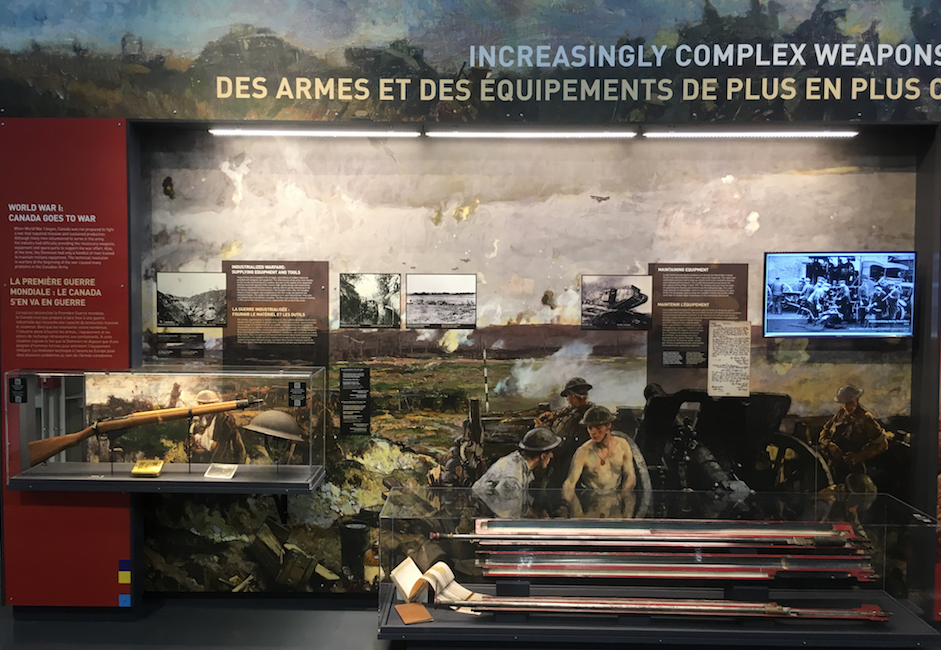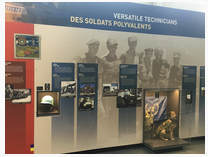Coupons
Event Calendar
Choose a Region
Find Somewhere to Stay
Find Somewhere to go
Find Out What's On
Find Things To do
Newsletter
Royal Canadian Electrical & Mechanical Engineers Museum-RCEME
Description
INTRODUCTION
Although the RCEME Corps only came into existence, as a separate Army Corps, in May 1944 its history and functions in the Canadian Army, date back to the early twentieth century. It began with the creation of the Canadian Ordinance Corps and subsequent division of this Corps into Engineering and Ordinance branches at the end of the First World War. Through two world wars, the Korean war, the beginning of the Cold War, and UN deployments, the RCEME Corps provided engineering and maintenance support to a vast array of equipment and its officers and soldier-technicians sacrificed much and earned many awards and honors.
However, it was not until October 1967, with the opening of the RCEME Corps Museum in Kingston, that a formal structure was used to record and retain the history and artifacts of this proud and dedicated organization. With the CF integration and unification in February 1968, the RCEME Museum in Kingston was closed and the artefacts were moved to the Base Borden Military Museum which became an amalgamation of the Air Operations and many Army corps museums. Subsequently the restructure and function of the RCEME museum was altered several times to get to where we are today with a Heritage Room at the RCEME School in CFB Borden and a new RCEME Museum in CFB Kingston, the original home station of the Corps. The Heritage Room in Borden focuses on Corps heritage items and pictures that helps to build knowledge and esprit-de-corps to our next generation of young officers and soldiers-technicians whilst the new RCEME Museum in CFB Kingston, uses high technology to tell the Corps story to members of the Corps and the general public. This article will outline the transition of the RCEME Museum over the years.
THE FIRST RCEME MUSEUM
The creation and development of the original RCEME Corps Museum at the home station in McNaughton Barracks in Kingston, was overseen by Col K.R. Ward who was Head of the RCEME Corps. He appointed, then Maj R.F. Fendick as chairman of the RCEME Museum Board and Sgt E.N.V. Turnbull as its curator. His directive issued in January 1965 resulted in the formal opening of the museum by Col R.A. Campbell on 21 October 1967 at the RCEME Corps Association Annual Conference.
The focus of the museum was to be on items that had a direct connection to the RCEME Corps and its origins. Items were expected to consist of documents and photographs, and appropriate hardware. Old allied and enemy equipment and weapons were specifically identified as inappropriate for the museum unless they had a special RCEME significance. Specific items originally in the museum that were highlighted in subsequent Technical Bulletins included a small chest of soil samples taken from French cemeteries with Canadian soldiers buried in them. It was brought to Canada in 1960 by Comptesse Hettier de Boislambert and presented to the Regiment de Chaudière to share with Canadian Regiments.
Also highlighted was a bronze plaque presented by the people of Giverville France to First Canadian Army Troops Workshop RCEME in appreciation for the Allied liberation of Normandy. Such items provided inspiration and purpose to new recruits and good memories to the veterans and their families.
The museum, as well as many other Corps assets, were impacted by the effects of Integration and Unification. The amalgamation of the RCEME and RC Signals School in 1969 and the subsequent move of the non-electronics training to Borden in order to create the Canadian Forces School of Aerospace and Ordnance Engineering in Borden in 1970, resulted in the closure of the museum in Kingston and the subsequent move of most of its assets to the Base Borden Military Museum.
THE LEAN YEARS
The Base Borden Military Museum at CFB Borden, became the home to several museums during the post integration and unification period. These included, Armored Corps, Logistics, Medical, Security and Intelligence, Air Operations as well as RCEME Corps/LORE Branch. Each had their own section of the museum and during some periods, they rotated displays at the entrance to the museum. Resources were a challenge during the early days of integration, and it was during this period that donations to the museums became tax deductible and this certainly aided in getting needed financial donations. Initially, a considerable amount of the items in the museum had to be put into storage, both due to lack of space, as well as to protect them from deterioration.
The museum was actively used by the various Schools to provide students on career courses with insight and knowledge on the history of their respective corps and mementos of significance. Some items from the museum were used in June 1994 as part of a display at the Canadian War Museum that recognized the 50th Anniversary of the RCEME Corps. Even during this period, the number of RCEME artefacts continued to grow as retired and deceased members of the Corps continued to donate historical treasures to the Base Borden Military Museum.
In 2004, the RCEME School created a Heritage Room as a means to better display significant historical items for the training and development of our officers and soldier-technicians. Many of the RCEME artefacts for the Heritage Room were retrieved from the Base Borden Military Museum whilst others had been accumulated at the school.
THE HERITAGE ROOM IN BORDEN
The Heritage Room was opened in the Col Billy Barker VC building as part of the celebration of the 60th birthday of the RCEME Corps. Its vision was “to serve as a training medium to teach EME history through the collection, presentation and display of military artifacts, pictures, books, documents, and equipment pertaining to the EME Branch and its predecessor corps.” Items highlighted in its opening by DGLEPM, the Branch Advisor, and Colonel Commandant, included the medals of Sgt Oran Campbell, the soldier-technician who liberated Sadie in Italy, and the medals of Cfn Roster who died on UN duty in 1961.
The preparations for the Heritage Room included the purchase and donation as well as the transfer from the Base Borden Military Museum, of memorabilia, models, medals, uniforms, kit and equipment, war souvenirs, and trophies. These illustrated the lives and times of RCEME Craftsmen who served around the world over sixty plus years. The Room includes a documentary archive, that contains a substantial collection of books, articles, reports, and personal papers, ranging from the activities of RCEME in war and peace down to the individual experiences of past and present RCEME personnel. As well there is a picture archive consisting of prints, film, video tape, digital files, paintings, maps, charts, and some cartoons, which further reflect RCEME history and pre RCEME technical history of the army.
The project to create the Heritage Room also led to the creation of the EME Branch Instructions, a manual designed to replace the RCEME Corps Instructions as a Regimental Manual.
The Heritage Room continues to operate with the focus on building Corps knowledge and esprit-de-corps in the training of young officers and soldier-technicians.
THE CURRENT STRUCTURE
The new RCEME Museum, was opened in Kingston in May 2016, as part of an extension of the Communications and Electronic (C&E) Museum. The RCEME Museum occupies about 3,500 square feet of the shared facility constructed in 2014. It was developed under the auspices of the RCEME Heritage committee co-chaired by Col A. Benson and Col A. Nellestyn.
Conceived as a museum for the future, it makes use of digital and modern technology to present the history of the Corps, the technology of its trades and recognition of outstanding events and acts in the life of the Corps, allowing visitors to interact with displays and equipment. As opposed to previous venues, this museum also has a focus on reaching the general public as well as current and retired service members and their families.
The layout provides a walk through the history of the Corps, highlighting operations and equipment from the first world war through the cold war, UN operations and Afghanistan. There is also a section on Honors and Awards, and another on the trades, which includes the old Leopard tank trainer inherited from the School.
The museum is still a work in progress. Over 12,000 visitors per year visit the museum. The history and displays at the museum received very favorable comments by visitors.
- Hours of Operation : Museum hours: 11:00am to 4:00pm Week Days. Closed Week Ends.***Holidays times will be posted***
- Wheelchair Accessible : Yes






